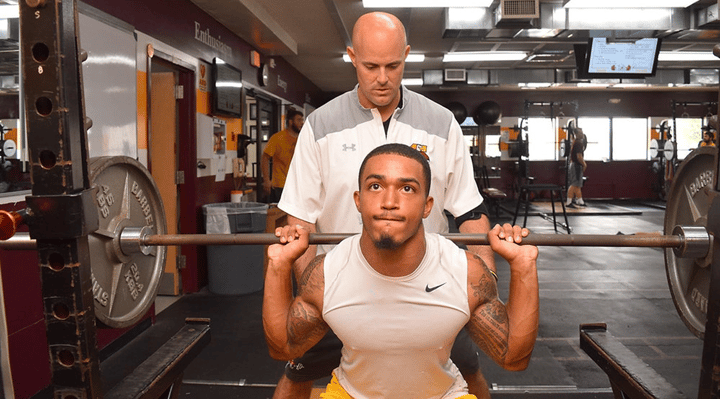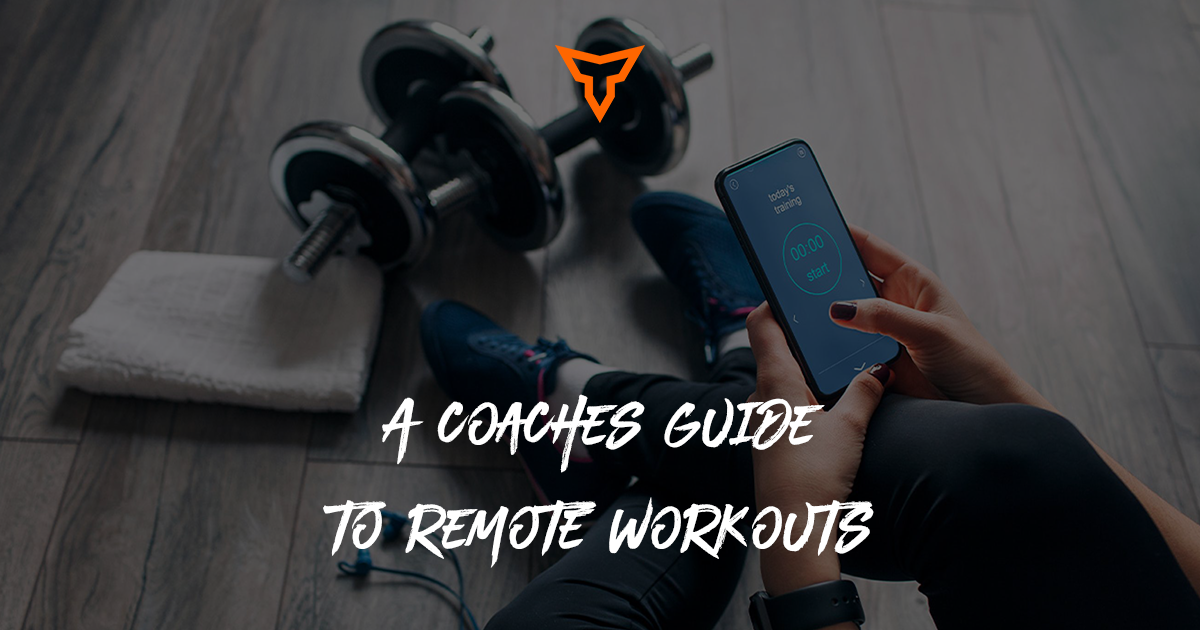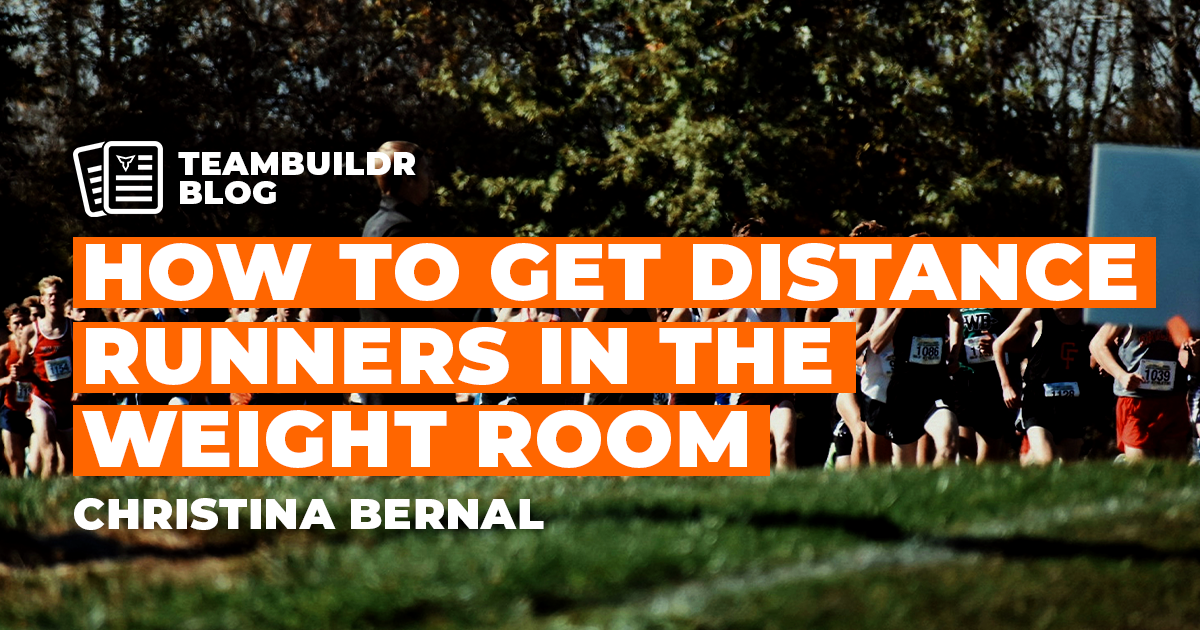Distance running is one of the most common activities people do today (Raman-Wilms, 2024). Don’t believe me? Look out your window on a sunny day and count how many people jog past.
One of the main reasons for this is how low the barrier to entry is. All you need is… a body. Yes, some shoes, running clothes, and headphones are a perk, but technically anyone (barring a physical limitation) can go for a run/jog at any time, regardless of age (once they learn to run), skill (I didn’t say they are going fast), and financial situation (it's free!).
Yes, many people go for runs or jogs throughout the week. These runners should be doing strength training to go along with their running habits. Why? Well, running has the highest incidences of injury per person out of any sport or activity (van Mechelen, 1992). Strength training has been shown to reduce injury risk (Hart, 2009). So naturally, strength training would decrease injury risk which allows you to partake in your hobby more often. But guess what else? It also allows you to increase your performance as well (Rønnestad & Mujika, 2013). So bottom line is that partaking in strength training will reduce your injury risk AND increase your performance while running. Hooked yet? Good. Now let’s dive into my top 5 exercises that I would highly recommend for any distance runner.
My experience working with distance runners primarily comes from my work with our Cross-Country team here at Trinity Western University. While our team is quite small (6-8 athletes total, 3-4 women, 3-4 men), they are a very hard-working group that is eager to push themselves to get better each day. They are a joy to coach, to challenge, and to learn from. Through that experience (and training myself) here are the 5 exercises that I get our distance crew to perform pretty much year-round and you should too!
Single Leg Work
It might seem obvious with all the info out these days how nearly every sport is a single-leg sport. Well, running is no different. Each stride you take is a plant and push from a single leg, so it would make sense that we need to train you on one leg. The benefits of single-leg training include better balance, proprioception, power, and being able to handle more load (which in turn increases strength gains) (Zhang et al., 2023). Example exercises vary from lunges, split squats, step-ups, or even single-leg Romanian deadlifts. The main point of this category is that you are putting force through and need to balance on one leg so you can better mimic the running pattern. Sure, double leg squats (bilateral) such as Back or Front Squats will also improve your strength and therefore help injury risk and performance, but it may maximize the transfer of your training to do single leg work (Zhang et al., 2023).
Core Stability
Core is a big buzzword, especially in the running community. It is very common for our distance team to do their long runs and then crush 8-10 minutes of “core” work to enhance their running. First off, what is the core, and how does the core help? The core is often seen as your abdominal muscles. However, it is much more than that. I would define the core as all the muscle from your ribcage down to just above your knees. Your whole middle 1/3 of your body (or more). Those muscles are responsible for stabilizing your body when you move and run as proximal stability allows for distal velocity (Kibler et al., 2006). Meaning that when you run, the efficiency of your stride and effectiveness comes down to how much power you can produce on each stride (Anderson, 1996). These qualities are decreased if you are leaking energy due to poor posture and/or too much movement in your upper body (inability to stabilize). Yes, some movement is necessary so you are not running like a robot, but it should be smooth and calculated with each stride, not floppy and random.
The best way to ensure your core can handle longer run demands is to train it to stabilize your body as you want it to in your runs (Hart, 2009). The most common versions of this are front and side planks. While there is nothing wrong with these and they are great places to start, I like our athletes to progress to doing core stability work while actually on their feet so it mimics the running stance and muscle usage more. My favorite exercises to use are loaded carries like Farmer Walks, Single Arm Farmer Walks, or Goblet Carries as well as Pallof Variations. These force the athlete to stabilize their core while walking or using their arms, which is exactly like running! Once again, looking for maximal transfer and these are golden for that.
Lower Leg (Feet/Ankle/Calf)
When you run, your lower limbs (feet/ankle/calf) are put through a ton of force on every single step. Even as much as 2-3 times your body weight (Nilsson & Thorstensson, 1989). That is the main reason why developing these muscles can be a great way to reduce injury risk from wear and tear as well as increase the performance of each step. Some of these exercises are a little less common but some of my favorites to help develop these lower limb muscles include Tib Bar raises for the shins, Walking Calf raises for the feet (and calves) and good old fashioned single and double leg calf raises for the calves.
Again, these muscles take a pounding on every step, so making sure they are strong enough to handle the loads can go a long way in helping you go a long way!
Upper Body
This one is often overlooked by distance runners. They get how getting stronger legs will help with their running, but often they shy away from developing their upper body strength because they do not see the carryover. Here is the way I see it. Try running without the use of your arms. Is it easier or harder? Exactly. So right there it proves to you that you use your upper body to run, so why not develop it as well? Now I am not looking for weighted running arms or anything like that (not a fan…) but doing the basics like Push-ups, Chin-ups, overhead pressing, and horizontal rows can go a long way in ensuring your upper body is helping your running and not hurting (Real Life Runners, 2021).
Aside from the use of your arms to run, we already spoke about the need for good posture when you run. What besides your core helps keep good posture? Your upper body! So developing a strong upper body can help increase running efficiency as well as make you a more well-rounded and robust athlete (Real Life Runners, 2021). In the sport performance realm, we often talk about asymmetries and how we want everything to be equal left versus right side. This is vital for improving performance and decreasing injury risk, but I believe so is looking at the asymmetry between the upper and lower body. Nobody wants to be the person who looks like they skipped leg day, but you also shouldn’t strive to look like a branch sitting on two tree stumps. Somewhere down the line, a large asymmetry will cause havoc on your body, regardless of it being left/right or upper/lower.
Sprints
This one might surprise people, but I get our cross-country athletes to sprint every session they are with me. Now this is not my idea, I stole this from other great coaches, but the premise behind this one is simple- the person who is the fastest wins the race. So why not try and develop speed in its most basic form, by sprinting? Now I am not talking about speed-endurance work, or working on your final kick when you are fatigued at the end of the race/run. I am talking about short 10-20m sprints to work primarily on acceleration. The increase in acceleration will enhance your overall speed which will return better results on your runs, whether you are racing or not (Koral et al., 2018).
The second reason for doing these is the force involved. We already talked about how much force goes into each step when you go for a run. Well, guess what? Those forces get MUCH bigger when you sprint (Nilsson & Thorstensson, 1989). So, another great way to get your body ready for the demands of a run is to do something that requires more force and power- like sprinting! This doesn’t have to be long sprints or testing your 40-yard dash every week, but by putting in a few short sprints a couple of times a week you can increase your speed, increase your force demands, and challenge your nervous system in a new way (which is what governs all movement so getting that firing better is a win-win!)
Example Program:
Okay now that we have explained the components of a great program for distance running, here is a sample 2-day program you can use by putting it all together.
Nothing crazy, just basic, good-quality movement that will increase your strength and power to help with your running performance and reduce injury risk.
Conclusion
So there you have it. No backflips or somersaults. Just simple movements that resemble the sport, mimic the force and allow you to be better prepared for the pounding that your body will take out on your runs. So whether you are a competitive athlete (cross-country or road races) or just like to “run for fun”, I strongly encourage you to dive into a strength training plan to help get you to the next level (and keep you there longer!)
References:
Anderson, T. (1996) ‘Biomechanics and running economy’, Sports Medicine, 22(2), pp. 76–89. doi:10.2165/00007256-199622020-00003.
Hart, L.E. (2009) ‘Prevention of running-related injuries among novices’, Clinical Journal of Sport Medicine, 19(1), pp. 77–79. doi:10.1097/01.jsm.0000344353.80352.01.
Kibler, W.B., Press, J. and Sciascia, A. (2006) ‘The role of core stability in athletic function’, Sports Medicine, 36(3), pp. 189–198. doi:10.2165/00007256-200636030-00001.
Koral, J. et al. (2018) ‘Six sessions of sprint interval training improves running performance in trained athletes’, Journal of Strength and Conditioning Research, 32(3), pp. 617–623. doi:10.1519/jsc.0000000000002286.
NILSSON, J. and THORSTENSSON, A. (1989) ‘Ground reaction forces at different speeds of human walking and running’, Acta Physiologica Scandinavica, 136(2), pp. 217–227. doi:10.1111/j.1748-1716.1989.tb08655.x.
Raman-Wilms, M. (2024) Why running is more popular than ever, The Globe and Mail. Available at: https://www.theglobeandmail.com/podcasts/the-decibel/article-why-running-is-more-popular-than-ever/ (Accessed: 07 July 2024).
Real Life Runners, R.L.R. (2021) Why runners need upper-body strength training, Why Runners Need Upper-Body Strength Training. Available at: https://www.realliferunners.com/blog/apr-19-2021 (Accessed: 07 July 2024).
Rønnestad, B.R. and Mujika, I. (2013) ‘Optimizing strength training for running and Cycling Endurance Performance: A Review’, Scandinavian Journal of Medicine & Science in Sports, 24(4), pp. 603–612. doi:10.1111/sms.12104.
van Mechelen, W. (1992) ‘Running injuries. A review of the epidemiological literature’, Sports Medicine, 14(5), pp. 320–335. doi:10.2165/00007256-199214050-00004.
Zhang, W. et al. (2023) ‘Effect of unilateral training and bilateral training on physical performance: A meta-analysis’, Frontiers in Physiology, 14. doi:10.3389/fphys.2023.1128250.
Subscribe to our blog
Subscribe to receive the latest blog posts to your inbox every week.
Related posts

Squats vs Deadlifts: Which is Better for Strength, Mass, and Power?

A Coaches Guide To Remote Workouts

